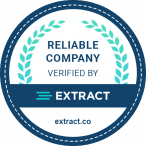The way businesses make and use apps is changing fast with serverless app development. This new way of cloud computing lets companies make apps without worrying about the tech behind them. This makes apps grow and change easily and saves money.
With serverless tech, companies can write code and help users quicker. The big plus is saving money. They only pay for what they use, not for servers they don’t need.
Table of Contents
Key Takeaways
- Serverless app development enhances scalability and reduces costs.
- It allows businesses to focus on writing code and delivering value to users.
- Cost efficiency is achieved by paying only for used compute resources.
- Serverless architectures simplify the development and deployment process.
- Cloud computing is revolutionized through serverless technologies.
What is Serverless Computing?
Serverless computing is changing how businesses make and run apps. It’s a big change in how apps are built, put out there, and managed.
Definition and Core Concepts
Serverless computing is a cloud model where the cloud provider handles server setup. This lets developers write code without worrying about the tech behind it. It’s all about Function as a Service (FaaS) and Backend as a Service (BaaS). These let developers run code snippets or functions when needed.
Evolution of Cloud Computing
Cloud computing has grown into serverless architectures over time. First, it offered virtual machines and storage. Then, it moved to more abstracted services, leading to serverless computing. This change is for better scalability, cost, and speed. Companies like cloud app development firms lead this change.
The “No Server” Misnomer
Serverless computing doesn’t mean no servers are used. It means the server management is hidden from developers. The cloud provider takes care of server upkeep, updates, and scaling. This lets developers just work on their code. This setup makes serverless computing scalable and efficient.
- Cost-effectiveness: Pay only for the compute time used
- Scalability: Automatically scale apps without manual effort
- Reduced administrative burden: Focus on code, not tech
The Paradigm Shift: From Traditional to Serverless Architecture
Serverless architecture marks a big change from old server-based models. It’s all about getting better scalability, saving money, and deploying things faster.
Traditional Server-Based Models
Old server-based models make developers spend a lot of time and money on server management. They often waste resources and add to the workload.
The Serverless Revolution
The serverless movement is changing how apps are made and launched. It lets developers write code without worrying about servers. This is great for apps that don’t always need a lot of.
Key Architectural Differences
Serverless and traditional architectures differ mainly in how they handle growth, cost, and upkeep. Serverless is all about being event-driven, scaling automatically, and charging only for what you use.
| Characteristics | Traditional Server-Based | Serverless Architecture |
|---|---|---|
| Scalability | Manual scaling, often requiring significant planning | Automatic scaling based on demand |
| Cost Model | Capital expenditure and operational costs | Pay-per-use, reducing costs for variable workloads |
| Management | Requires server management and maintenance | Abstracts away server management |
How Serverless Computing Works
Serverless computing is a cloud model where the cloud provider manages the infrastructure. Users only pay for what they use. It’s a simple yet powerful way to run applications.
Function as a Service (FaaS)
FaaS lets developers write and deploy individual functions. These functions can be triggered by specific events. It makes applications more flexible and scalable.
Backend as a Service (BaaS)
BaaS offers backend services like databases and storage. It helps developers focus on the application’s logic. The cloud provider handles the backend.
Event-Driven Architecture
Serverless computing relies on event-driven architecture. Applications react to specific events. This leads to faster and more dynamic apps.
Execution and Scaling Mechanisms
In serverless computing, the cloud provider manages scaling. Resources adjust automatically based on demand. This ensures applications can handle changes without manual effort.
Understanding these components helps developers create efficient, scalable apps. Serverless computing is a powerful tool for building cost-effective applications.
Key Players in the Serverless Ecosystem
The serverless computing world is led by big cloud providers. Each one offers special services and features. These help grow and improve serverless tech.
AWS Lambda
AWS Lambda is a leader in serverless tech. It lets developers run code without worrying about servers. It supports many programming languages and works well with other AWS services.
Microsoft Azure Functions
Microsoft Azure Functions is a serverless service for running code. It doesn’t need you to set up or manage servers. It works with many programming languages and Azure services, making it a favorite for serverless apps.
Google Cloud Functions
Google Cloud Functions is a simple, event-driven serverless platform. It lets developers run code when needed. It works well with Google Cloud services and popular programming languages.
IBM Cloud Functions
IBM Cloud Functions uses Apache OpenWhisk for serverless execution. It lets developers run code on events. It supports many programming languages and works with IBM Cloud services.
Cloudflare Workers
Cloudflare Workers is a serverless platform for running JavaScript or WebAssembly at the network edge. This makes processing faster and reduces latency. It’s great for apps that need quick processing and edge computing.
For more on choosing a cloud provider for your app backend, check out this resource. It compares AWS, Azure, and GCP in detail.
Serverless App Development: Faster, Cheaper, and Scalable
Serverless computing lets developers create apps that are quick, affordable, and grow easily. This change is big because it helps apps get to market faster, saves money, and scales well.
Speed to Market Benefits
Serverless app development makes apps deploy faster. It lets developers write code and add features quickly. This speed to market is key in today’s fast-paced world.
Cost Efficiency Analysis
Serverless computing is also cost-effective. It uses a pay-per-use model, so you only pay for what you use. This saves money, especially for apps with changing needs.
Automatic Scaling Capabilities
Serverless apps scale automatically with demand. They handle sudden traffic spikes without manual help. This ensures a great user experience, even when busy.
Developer Productivity Gains
Serverless computing makes developers more productive. They can focus on writing code that matters, not on server tasks. This boosts morale and speeds up development.
In summary, serverless app development is a great choice for businesses. It helps them innovate fast, save money, and scale apps easily. As it gets better, more businesses will use it, leading to more innovation in software development.
Economic Benefits of Going Serverless
Serverless technology helps organizations cut down on costs. It’s becoming clear to businesses around the world how much they can save.
Pay-Per-Use Pricing Model
The pay-per-use pricing model is key to serverless computing. It lets businesses only pay for what they use. This way, they avoid spending on unused resources.
Reduced Operational Costs
Serverless setups cut down on operational costs by letting cloud providers handle the servers. This means less money spent on upkeep and scaling. Teams can then focus on coding, not server management.
Total Cost of Ownership Comparison
Looking at the total cost of ownership (TCO), serverless is often cheaper. It saves money by not needing to manage servers. This leads to big savings for businesses.
ROI Case Studies
Many ROI case studies show the financial gains of serverless tech. They show how it boosts efficiency, cuts costs, and scales better. This leads to a big return on investment for companies that switch.
Performance and Scalability Advantages
Serverless computing is changing how apps are made and used. It lets businesses create apps that grow and work well without managing the tech behind them.
Auto-scaling on Demand
Serverless computing is great because it can grow or shrink as needed. It adjusts resources based on how much work it has, so apps can handle more users without help. Auto-scaling helps businesses meet demand fast, making users happy and saving money.
Handling Traffic Spikes
Serverless systems are good at dealing with sudden increases in users. They grow or shrink as needed, without needing to be set up ahead of time. This is key for apps that see lots of users at once.
Global Deployment and Edge Computing
Serverless computing makes it easy to deploy apps worldwide. By placing apps closer to users, it cuts down on delays. This is great for apps that need to work fast.
Performance Optimization Techniques
To make serverless apps run better, several methods can be used. These include making the app code better, setting the right memory, and using caches. By using these performance optimization techniques, developers can make sure their apps work well.
For more on how cloud computing helps web development, check out Next Big Technology.
Limitations and Challenges in Serverless Development
Serverless computing has many benefits, but it also comes with challenges. Developers face several limitations that can affect their apps’ performance and upkeep.
Cold Start Issues
One big challenge is the cold start issue. When a function is first used after being idle, it takes time to start. This can cause delays, especially for apps that need quick responses.
Execution Time Limits
Serverless platforms set time limits for functions. For example, AWS Lambda limits functions to 15 minutes. Developers must plan their functions to finish before these limits.
Debugging and Monitoring Complexities
Debugging serverless apps is harder than traditional ones. It’s because serverless apps are spread out. Also, tracking and logging need special tools to see how functions are doing.
Vendor Lock-in Concerns
Vendor lock-in is another big issue. When developers use specific serverless platforms, they might find it hard to switch later. To avoid this, using containerization or low-code development can help.
| Challenge | Description | Mitigation Strategy |
|---|---|---|
| Cold Start | Latency due to function initialization | Keep functions warm, optimize initialization |
| Execution Time Limits | Restrictions on function execution time | Design functions to complete within time limits |
| Debugging Complexities | Difficulty in debugging distributed applications | Use specialized monitoring and logging tools |
| Vendor Lock-in | Dependence on a specific cloud vendor | Adopt containerization, low-code frameworks |
Security Considerations for Serverless Applications
Serverless architecture is becoming more popular. It’s important to know its security risks. A good defense strategy is needed to handle these challenges.
Shared Responsibility Model
The shared responsibility model is key in serverless security. Both the cloud provider and the customer must work together. The provider takes care of the infrastructure, while the customer secures the application code, data, and settings.
Function-Level Security
Securing serverless functions is essential. This means setting up each function correctly and keeping an eye on it. It’s important to use least privilege access, check input data, and follow secure coding practices.
API Gateway Protection
API gateways are the first point of entry for serverless apps. They need strong security. This includes using authentication, rate limiting, and encryption to stop unauthorized access and data breaches.
Data Protection and Compliance
Protecting data and following rules in serverless apps is vital. This means encrypting sensitive data and following laws like GDPR and HIPAA.
| Security Measure | Description |
|---|---|
| Data Encryption | Encrypting data to protect it from unauthorized access |
| Authentication | Verifying the identity of users and services |
| Access Control | Limiting access to resources based on user roles |
A security expert says, “Securing serverless apps requires understanding the shared responsibility model. It also needs strong security at every level.”
“Security is not just about protecting against threats; it’s also about ensuring compliance and maintaining the trust of your users.”
Building Your First Serverless Application
Creating your first serverless app needs a good grasp of the development environment and how to deploy it. Serverless computing offers a scalable and cost-effective way to develop apps.
Setting Up Your Development Environment
The first thing to do is set up your development environment. You’ll need to install tools and frameworks that support serverless apps. Node.js is great for AWS Lambda, while Python works well for AWS Lambda or Google Cloud Functions.
Key components of a development environment include:
- A code editor or IDE
- Node.js or Python runtime
- Serverless framework (e.g., Serverless Framework, AWS SAM)
- Cloud provider CLI (e.g., AWS CLI, Google Cloud SDK)
Choosing the Right Framework
Picking the right serverless framework is key for efficient development. You have options like the Serverless Framework, AWS SAM, and Terraform. Each has its own strengths and fits different needs and cloud providers.
Considerations when choosing a framework:
- Compatibility with your cloud provider
- Support for your programming language
- Ease of use and learning curve
- Community support and documentation
Writing and Testing Functions
With your environment ready, start writing your serverless functions. These functions run in response to events. Testing is crucial to make sure they work as expected.
Best practices for writing and testing functions:
| Practice | Description |
|---|---|
| Modularity | Keep functions modular and focused on a single task |
| Error Handling | Implement robust error handling and logging |
| Testing | Write unit tests and integration tests for your functions |
Deployment Strategies
After testing, it’s time to deploy. You’ll package your code and dependencies, then upload them to your cloud provider. The deployment strategy depends on your framework and provider.
By following these steps and best practices, you can successfully build and deploy your first serverless app. As you get more experience, you can explore more advanced features and optimizations.
Popular Serverless Frameworks and Tools
Serverless computing is becoming more popular. Many frameworks and tools have been created to help with this change. They make development easier, improve productivity, and offer scalable solutions for serverless apps.
Serverless Framework
The Serverless Framework is a top choice for building serverless apps. It works with AWS, Azure, and Google Cloud, letting developers write code for any cloud. It makes deploying apps easier and includes features like automated scaling and monitoring.
AWS SAM
AWS SAM is a framework made for AWS Lambda. It has a simple syntax for defining serverless apps. This makes managing resources and deploying apps easier. AWS SAM also works well with AWS services, offering tools for building and testing serverless apps.
Terraform and Infrastructure as Code
Terraform is a well-liked tool for managing infrastructure as code. It lets developers define infrastructure with a simple configuration file. This makes managing and versioning infrastructure easier. Terraform works with many cloud providers, offering a consistent way to manage serverless resources.
Monitoring and Debugging Tools
Monitoring and debugging are key for serverless apps. Tools like AWS CloudWatch, Datadog, and New Relic help track performance and find issues. They also help optimize apps. Tools like Thundra and Lumigo focus on debugging and monitoring for serverless apps.
Using these frameworks and tools helps developers work more efficiently. It improves app performance and reduces complexity in serverless environments.
Real-World Use Cases and Success Stories
Serverless computing is growing and being used in many ways. Businesses in different fields are using it to innovate, work better, and save money.
E-commerce Applications
E-commerce sites use serverless tech to handle big traffic spikes. For example, a big online store used it to grow its setup during a big sale. This cut their costs by 30% and made pages load faster, improving user experience.
IoT Solutions
Serverless tech is also changing the Internet of Things (IoT). It lets IoT devices handle data quickly without needing a lot of setup. A smart home security firm used it to check data from millions of devices. This led to fast threat detection and safer homes.
Media Processing and Content Delivery
Serverless tech is also used in media and content delivery. A media company used it to change video formats for different devices. This made content delivery faster and cut video processing costs.
Enterprise Case Studies
Many big companies have used serverless tech to their advantage. For example, a financial firm used it to make a scalable and secure app for transactions. This improved compliance and cut costs.
These examples show how serverless computing is versatile and powerful. As tech keeps improving, we’ll see more creative uses of serverless tech in many fields.
Migrating Existing Applications to Serverless
Switching to serverless is more than just tech changes. It needs a smart plan for updating apps. When companies think about migrating to serverless, they must look at their apps closely.
Assessment and Planning
The first step is to deeply check the current app setup. You need to find out what can be moved easily and what needs big refactoring. Good planning helps avoid big problems and makes sure everything runs smoothly.
Refactoring Strategies
Refactoring is key to really use serverless to its fullest. This might mean splitting big apps into smaller parts. A study shows that smart refactoring is essential for a smooth move to serverless.
Hybrid Approaches
Using a hybrid approach can help move to serverless step by step. This means keeping some parts on old systems and moving others to serverless.
Common Migration Challenges
Even with benefits, migration challenges are real. These include handling complexity, keeping things secure, and avoiding being stuck with one vendor. Knowing these issues helps come up with good solutions, as seen in articles on app modernization.
Integrating Serverless with Other Technologies
Serverless computing is changing how we build and run apps. As more companies use serverless, they need to link it with other tech. This is key for success.
Containerization and Kubernetes
Serverless works well with containerization, like Docker, and tools like Kubernetes. This combo offers flexible deployment and resource management. Serverless is event-driven and short-lived, while containers are more stable. Together, they offer a strong mix.
Microservices Architecture
Serverless fits well with microservices architecture. This breaks apps into smaller, independent parts. Serverless functions make each microservice scalable and cost-effective.
AI and Machine Learning Integration
Serverless and AI and machine learning together create advanced apps. Serverless functions handle data, model training, and predictions. They scale automatically to meet needs.
Database and Storage Solutions
Serverless apps use cloud-native database and storage solutions. This integration offers a smooth and scalable data management. It meets a variety of app needs.
By combining serverless with these technologies, developers make apps better, more scalable, and efficient. This leads to innovation and less complexity.
Best Practices for Serverless Development
Following best practices in serverless development is key to saving time and money. As serverless tech grows, knowing the right ways to develop is vital for developers.
Function Design Patterns
Good serverless development starts with well-made functions. It’s important to keep functions small and focused. Each function should do just one thing.
“Serverless architecture is not just about the technology; it’s also about the culture and practices that come with it.” –
Using design patterns like the Single Responsibility Principle makes serverless apps easier to maintain and grow.
Testing Strategies
Testing is crucial in serverless development. It’s important to have a solid testing plan. This includes unit tests, integration tests, and end-to-end tests.
Tools like AWS SAM or the Serverless Framework make testing easier. A good testing plan ensures serverless apps work well.
Monitoring and Observability
Monitoring and observability are key to knowing how well serverless apps perform. Developers should use tools that give real-time insights into function performance and errors.
Using distributed tracing helps find and fix complex problems in serverless apps.
Cost Optimization Techniques
Cost savings are a big plus of serverless computing. Ways to save include right-sizing functions, optimizing memory, and using reserved capacity.
It’s important to regularly check how your app is used and adjust settings to save money.
By following these best practices, developers can make sure their serverless apps are efficient, grow well, and are cost-effective. As serverless tech keeps changing, staying up-to-date with the latest best practices is crucial.
Conclusion
Serverless app development is changing how businesses make and use apps. It uses cloud computing to let developers write code without worrying about the tech behind it.
The benefits are obvious: apps get to market faster, cost less, and grow easily. Serverless computing lets businesses quickly adapt to market changes, save money, and handle changing workloads well.
However, there are challenges like cold start issues and getting stuck with one vendor. Still, the good points of serverless make it a great choice for many. By learning about it, businesses can use it to innovate and improve their app-making.
As cloud computing keeps growing, using serverless app development helps businesses stay ahead. They can make apps that grow and save money better.



















